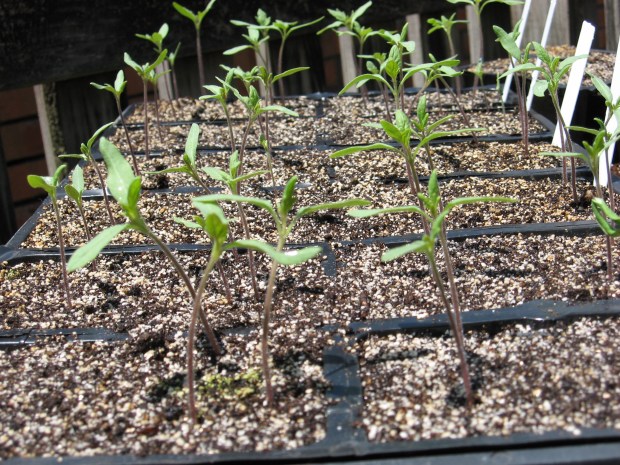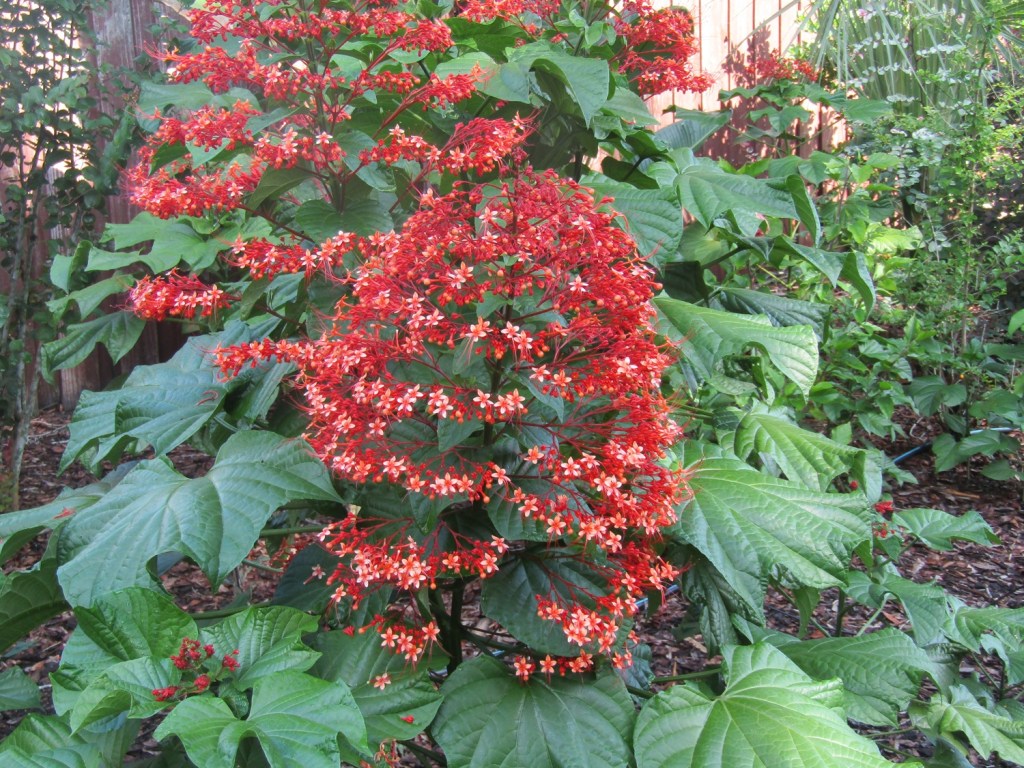Question: Bright reddish flower spikes are developing on tall plants in a few local landscapes. Would you know the name and is it a good one to grow?
Answer: Enjoy the summer through early fall color of the pagoda flower, one of a number of clerodendrons that grow in the warmer areas of Florida as pictured in an emailed photo. It can grow to at least 6 feet tall. Pagoda flower plants are considered evergreens but can be damaged by cold. Plants normally restart regrowth from underground runners in spring. These shrublike landscape additions can grow to 8 feet wide and may become a bit invasive, so some annual trimming to keep runners in bounds is likely needed. Plantings form attractive accents for home landscapes serving as background shrubs in full sun to lightly shaded locations.
Q. Our tibouchina planted about a year ago suddenly started to decline and looks like it will die. Can it be saved?
A. Regretfully your tibouchina, also know as princess flower, is in a severe state of decline as noted in an emailed photo. Limbs and foliage are turning brown and wilting. It appears a new tibouchina is in your future. As you noted in your email, root or stem rot is likely the cause for decline. Find your next plant a new location or remove a good bit of soil as you replant. Make sure the top of the root ball is an inch or two above the soil line and keep the root ball moist but not overly wet. Also, it’s best to only mulch up to the edge of the root ball.
Q. I would like to save a little money by rooting coleus from good-size plants in my yard. What should I do to get new coleus started?
Plant Doctor: How much to prune off a gardenia that’s grown taller than you like
A. You have picked a real money saver to start with as new coleus plants cost up to $3 or more at garden centers. Coleus root quicky from 6 inch tip cuttings set in small containers of potting soil. After you remove the tops of long stems even the lower portions of the stems bearing some leaves can be rooted. Remove lower leaves from the 6 inch cuttings and stick the basal portions about 2 inches deep in the soil. Keep the cuttings moist with frequent misting and located in a shady spot. Many like to surround clusters of cuttings in their containers with clear plastic to help hold in moisture. Cutting should start to root in about two weeks and be ready for larger containers in about a month. Apply the first liquid fertilizer after the cuttings have produced a few roots.
Q. I have several 12-year-old crown of thorns plants in their original pots that have become tall and leggy. Can they be cut back to make them more compact?
A. Most gardeners choose early to mid-spring as the best time to trim their crown of thorns plants. This way the plants have plenty of time to regrow and flower during the warmer weather. But you can perform needed pruning anytime it’s warm. Try to make your cuts back to an angle where the stems branch or where you have leaves or buds emerging. New stems and leaves then form from below these cuts. Portions removed can be rooted after the cuts air dry for a day or two. Crown of thorns plants don’t mind growing rootbound in their containers but after 12 years it may be time for a new pot and soil. Select one an inch or two larger to give your plants a little more root room. Use a loose well-drained potting soil to avoid overwatering and root rot problems.
July in the Garden for Central Florida
Q. Our lawn needs replacing with St. Augustinegrass. Is one variety better than another?
A. All St. Augustine selections grow in full sun and are going to look very similar. Varieties may vary a bit as to leaf size, green color and preferred mowing height. If they have been on the market for a few years and shall we say time tested, they are likely to do well in your yard. Floratam, a variety marketed for more than 40 years, is the most popular being a traditional St. Augustine with lots of vigor. It has one problem — Floratam does not grow well in the shade. When shade is involved, select another type such as Seville, DeltaShade or similar that tolerates lower light levels. Also it would be better to delay sodding shady sites until fall as rains and irrigation during summer often causes rot problems in these areas.
Q. I planted tomato transplants in June but all I am getting are stems and leaves — no flowers or fruits. What am I doing wrong?
A. Perhaps you started this garden a little too early. A majority of tomato plantings grow good shoots and foliage during summer but open few blooms or set fruits. Allow your plants to grow but don’t expect much fruit production until around October. Cherry tomatoes seem to do best during the summer but even these varieties produce fewer fruits. Some varieties are marketed for the hotter weather but Florida seems a bit too hot for even these. Now is the time to start seeds to produce the next transplants that are added to gardens between mid-August and early September. These can be expected to flower and fruit when temperatures are more moderate during early fall. Sow one seed to a cell or small container, keep it moist and in sun after germination to have transplants in about four weeks. Fertilize lightly and weekly after germination.
Tom MacCubbin is an urban horticulturist emeritus with the University of Florida Cooperative Extension Service. Write him: Orlando Sentinel, P.O. Box 2833, Orlando, FL. 32802. Email: TomMac1996@aol.com.
 A majority of tomato plantings grow good shoots and foliage during summer but open few blooms or set fruits. (Courtesy of Tom MacCubbin)
A majority of tomato plantings grow good shoots and foliage during summer but open few blooms or set fruits. (Courtesy of Tom MacCubbin)

